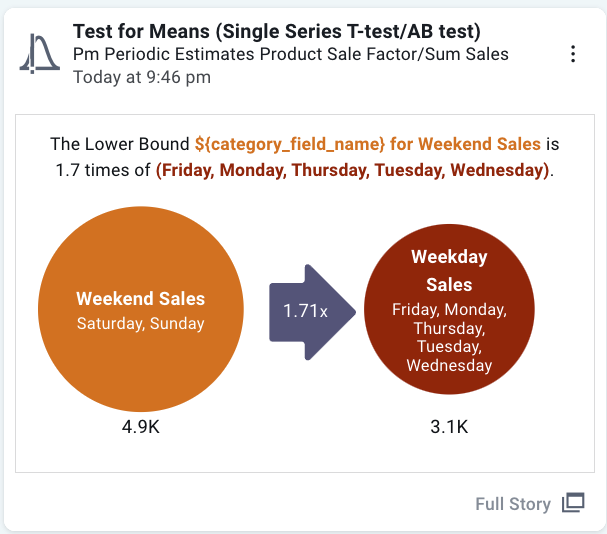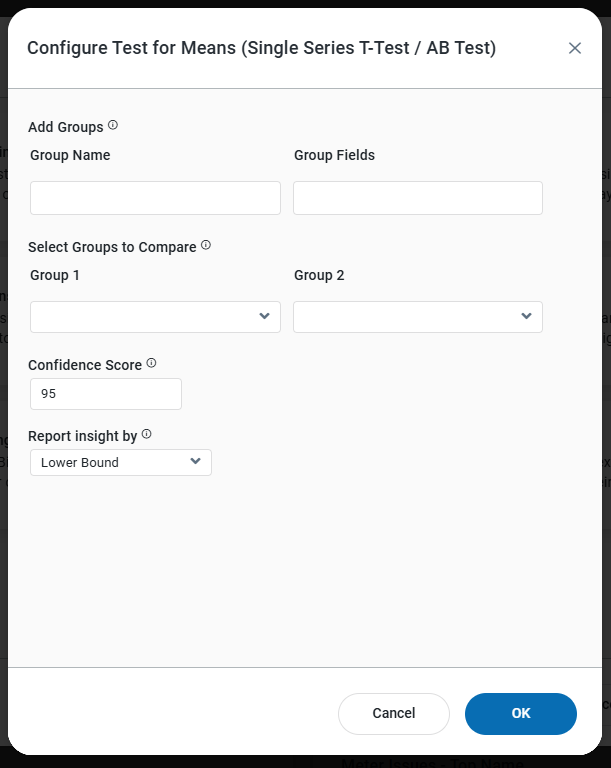Test for Means - Single Series T-Test (One Sample Data to 2 Groups)
Intended audience: END-USERS DATA SCIENCE DEVELOPERS
AO Easy Answers: 4.3
Overview
T-Test analysis refers to a statistical comparison used to determine if there is a significant difference between the means of two groups.
Purpose
The 1-Sample T-Test is used to check if the average of a sample differs from a known target or standard. It's useful for seeing if what you're measuring meets expectations.
Business Example
Consider a company producing chocolate bars. They aim to produce bars that weigh 50 grams each. To ensure consistency, they measure the weight of bars produced over 30 days.
Scenario
The company has a target weight of 50 grams for each chocolate bar. They collect data on the weight of bars produced over 30 days to see if the average weight matches this target.
By using the 1-Sample T-Test, they compare the actual average weight of the bars to the target of 50 grams to determine if there’s a significant difference.
Results
If the test shows a significant difference, it means the average weight is not meeting the 50-gram target, prompting further investigation. If not, it suggests the production process is consistent with the target.
Data Sample
Sum Sales | Day Of The Week |
|---|---|
Saturday | 5,480.00 |
Sunday | 5,577.00 |
Monday | 3,247.00 |
Tuesday | 3,168.00 |
Wednesday | 3,172.00 |
Thursday | 3,198.00 |
Friday | 3,164.00 |
Infographics Insight

Full Story Insight

End User Configuration - using Easy Answers solution

